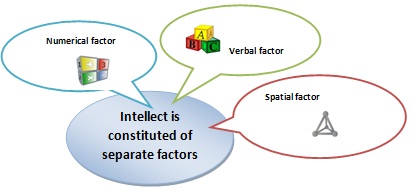EP
- Describe Thorndike’s Multifactor Theory of Intelligence.
Introduction
E.L.Thorndike opposed
Sternberg’s theory of general intelligence and propagated the multifactor
theory or the atomistic theory of intelligence. According to his multifactor
theory of intelligence, he proposed that individual’s intelligence is a
combination of numerous separate elements or factors, each one being a minute
element of one’s ability.
Thorndike has
stated in his famous book on educational psychology that the mind is a host of
highly particularized and independent faculties. Intelligence, according to him,is the sum total of various such smaller independent faculties and each faculty
is related to some kind of cognitive functions and intelligence as we measure
and describe, is a synthesis of all such smaller abilities.
Further he states
that a mental act involves a number of these minute elements operating together.
If any two tasks are correlated, the degree of correlation is due to the common
elements involved in the two tasks.
As regards the inter-correlations
between different factors of intelligence, Thorndike assumes that this
correlation owes mainly to commonalities of abilities.
In task (B), another group of students are presenting the data collected from the survey. In this task, students use the same method of presenting the data. In this task students use their mathematical ability to interpret and present the collected data from the survey. They use their verbal skills to present the data classroom and spatial skills to draw graphs and charts to interpret the data. They also use their inductive reasoning skills to draw conclusions from the interpreted data.
Performance of task A requires the verbal and visual abilities while task B involves verbal, visual, mathematical and inductive reasoning abilities. Now since, certain abilities like verbal and visual are commonly involved in both the tasks, possibilities of high correlations between the two exist. As the number of common abilities is increased, higher inter-correlations may be obtained.

Select the correct option.
Thorndike’s multifactor theory gives emphasis on
|
Intelligence is a general ability
| |
|
There are different types of intelligence
| |
|
Intelligence is a
combination of numerous separate elements of factors, each one being a minute
element of ability
|
Critical comments
Thorndike’s theory in fact is an imaginary theory because his views suffer from lack of uniformity. On the one hand he talks of various abilities, while on the other he also makes a reference to the ‘g’ factor.
Any intellectual activity or mental task may involve numerous specific factors each being minute and independent of each other. Justify your answer with examples.
Visit the Discussion Forum created for discussion on the above topic. Post your reply in the forum.
After writing your post and reading others posts, continue with the next module.
Designed and Developed by Department of Educational Technology, SNDT Women's University, Mumbai